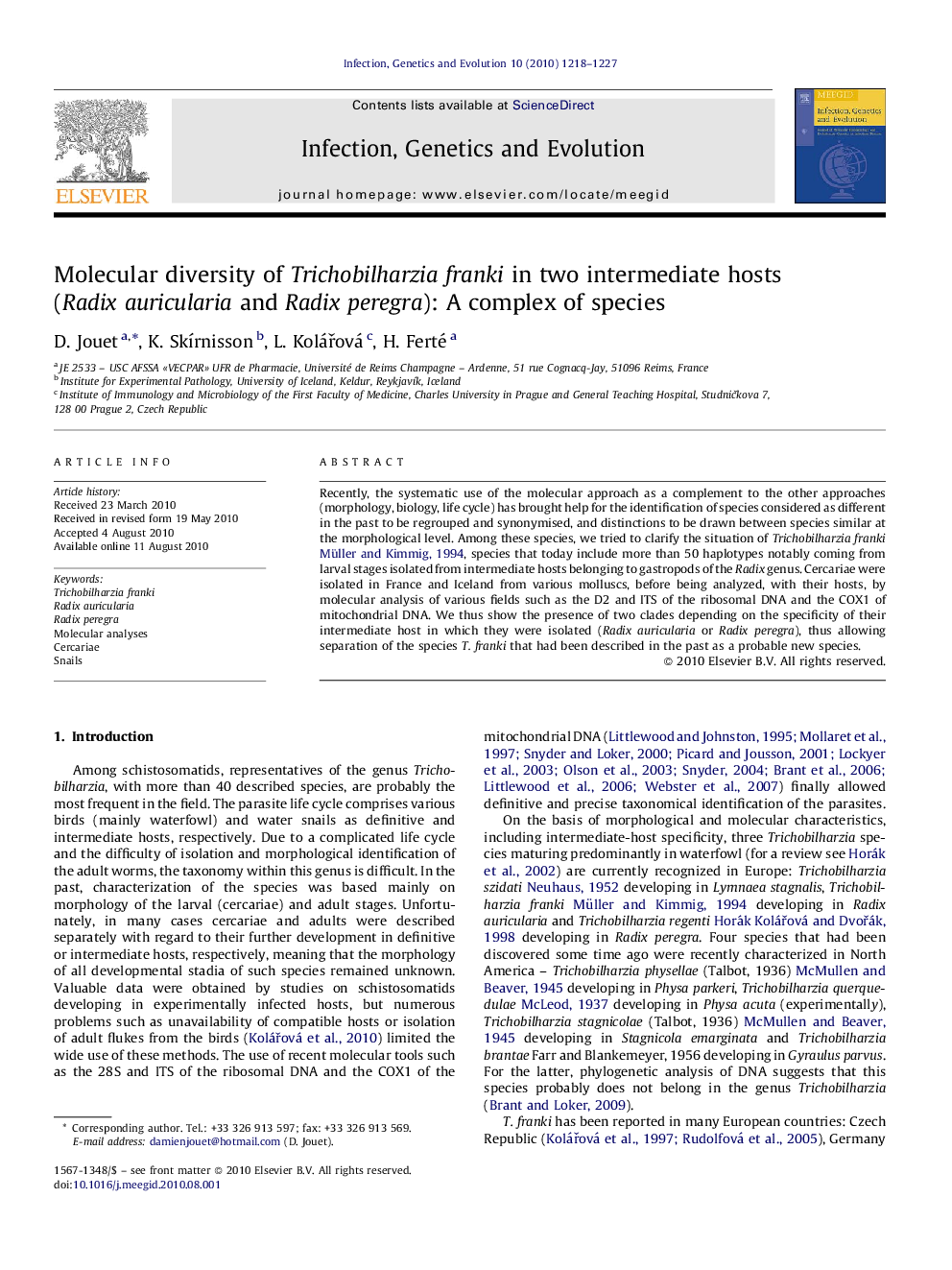| Article ID | Journal | Published Year | Pages | File Type |
|---|---|---|---|---|
| 5911922 | Infection, Genetics and Evolution | 2010 | 10 Pages |
Abstract
Recently, the systematic use of the molecular approach as a complement to the other approaches (morphology, biology, life cycle) has brought help for the identification of species considered as different in the past to be regrouped and synonymised, and distinctions to be drawn between species similar at the morphological level. Among these species, we tried to clarify the situation of Trichobilharzia franki Müller and Kimmig, 1994, species that today include more than 50 haplotypes notably coming from larval stages isolated from intermediate hosts belonging to gastropods of the Radix genus. Cercariae were isolated in France and Iceland from various molluscs, before being analyzed, with their hosts, by molecular analysis of various fields such as the D2 and ITS of the ribosomal DNA and the COX1 of mitochondrial DNA. We thus show the presence of two clades depending on the specificity of their intermediate host in which they were isolated (Radix auricularia or Radix peregra), thus allowing separation of the species T. franki that had been described in the past as a probable new species.
Keywords
Related Topics
Life Sciences
Agricultural and Biological Sciences
Ecology, Evolution, Behavior and Systematics
Authors
D. Jouet, K. SkÃrnisson, L. KoláÅová, H. Ferté,
